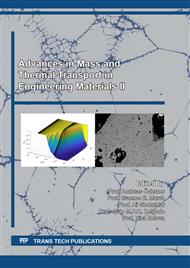p.77
p.84
p.91
p.98
p.109
p.125
p.136
p.146
p.157
Diffusion in Metallic Glasses and in Oxide Glasses - An Overview
Abstract:
We remind the reader to some common features of metallic and oxide glasses. We then introduce the radiotracer method for diffusion studies, which can be applied for both types of glasses. We provide an overview on diffusion in metallic glasses in which we consider both types of metallic glasses – conventional and bulk metallic glasses. In the last part we discuss diffusion and ionic conduction in oxide glasses. For ionic glasses, conductivity measurements are an important complement to tracer diffusion studies. We remind the reader to the method of impedance spectroscopy. We discuss results for soda-lime silicate glasses, single alkali borate glasses and mixed alkali borate glasses and present evidence for collective jump processes in glasses.
Info:
Periodical:
Pages:
109-124
Citation:
Online since:
December 2021
Authors:
Price:
Сopyright:
© 2021 Trans Tech Publications Ltd. All Rights Reserved
Share:
Citation:


